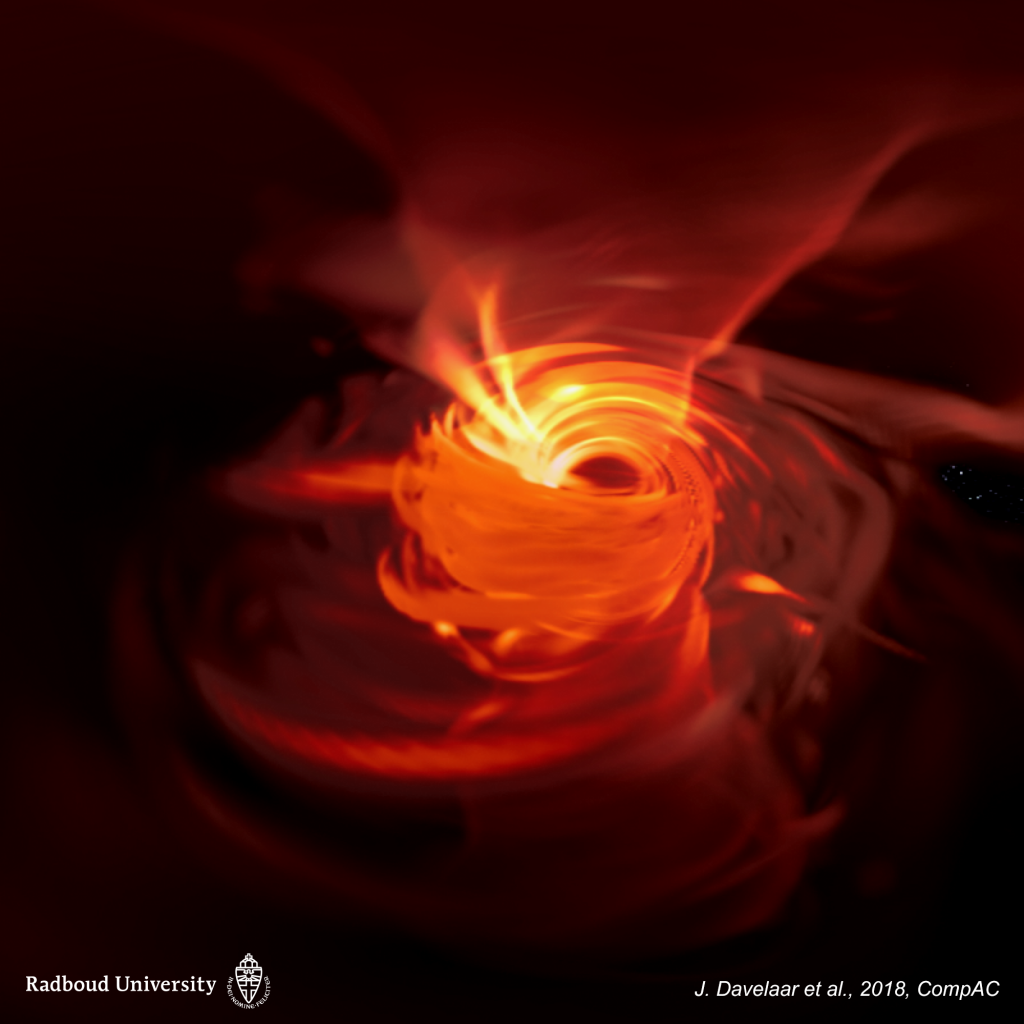A New Virtual Reality Experience Takes You Inside A Black Hole
Posted on Categories Discover Magazine

Inside a Black Hole
Have you ever wanted to travel to the center of the galaxy and witness the power of a supermassive black hole in person? With current technology, humans couldn’t travel the 25,640 light-years from Earth to the Milky Way’s supermassive black hole in a single lifetime. Nor could we survive being so close to the extreme gravitational forces of a singularity. But a new virtual reality simulation gives us all the chance to swoop close by a black hole and experience the time and space-warping effects of their immense pull.
Scientists at Radboud University in the Netherlands and Goethe University in Germany have used computer models of Sagittarius A*, the black hole at the heart of the Milky Way. Using a series of detailed images from the models, the team developed a 360-degree VR simulation of Sagittarius A*. This resulting simulation can be viewed with any VR device.
“Our virtual reality simulation creates one of the most realistic views of the direct surroundings of the black hole and will help us to learn more about how black holes behave. Traveling to a black hole in our lifetime is impossible, so immersive visualizations like this can help us understand more about these systems from where we are,” Jordy Davelaar, corresponding author on the research paper behind this project, said in a statement.
VR Outreach
This simulation could also act as an outreach and educational tool, making astrophysics accessible to the general public, according to Davelaar. He added that children who have seen the simulation so far have been able to learn from it, showing how it could be a great teaching tool even for complex topics like black holes.
VR is finding new and exciting uses in outreach and in educational settings, giving users the chance to enter environments otherwise inaccessible. This is the first time anyone has used the technology to give us a chance to enter a black hole.
New research continues to expand our understanding of black holes, and scientists’ conception of them has changed dramatically over the past few decades.
“We all have a picture in our head of how black holes supposedly look, but science has progressed and we can now make much more accurate renderings — and these black holes look quite different from what we are used to. These new visualizations are just the start, more to come in the future,” Heino Falcke, a co-author and professor of astrophysics at Radboud University, said in the statement.
Their paper was published in the journal Computational Astrophysics and Cosmology.